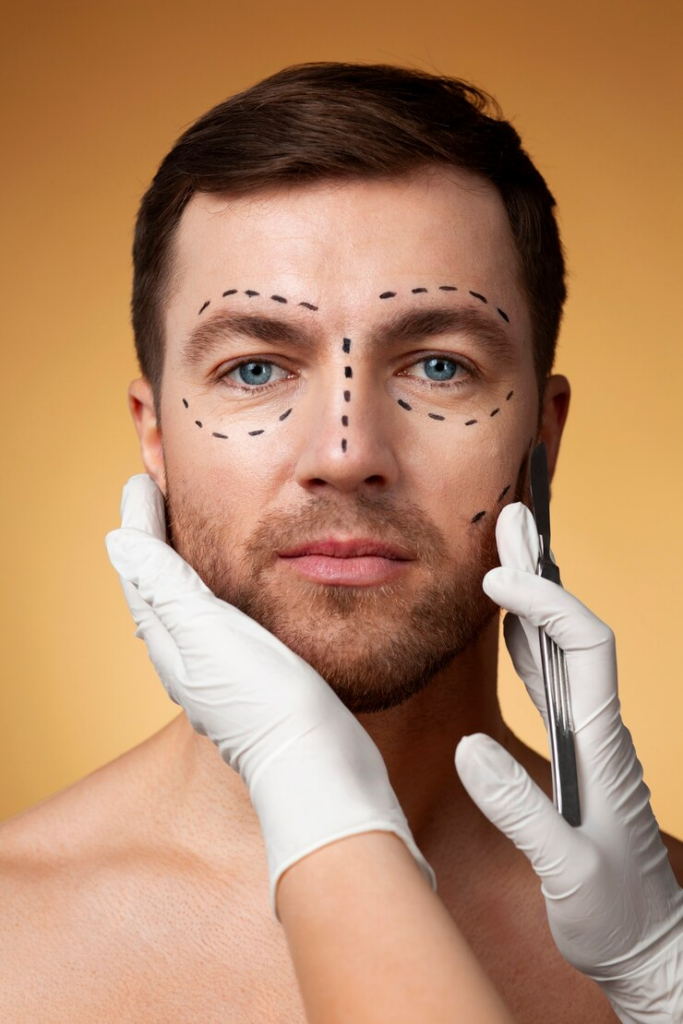Have you ever wondered if your face could better reflect your internal identity? For many transgender women and assigned-male-at-birth non-binary individuals, FFS surgery (male to female) can be a powerful tool in achieving gender congruence.
FFS surgery (male to female) is a set of cosmetic procedures designed to subtly alter facial features to create a more feminine appearance. This can significantly improve self-confidence and social interactions for those who experience gender dysphoria related to their facial characteristics.
Is FFS surgery (male to female) right for you? This guide will delve into the different procedures involved, the impact it can have, and the crucial factors to consider before making this life-changing decision.

Unveiling Your Truth: A Deep Dive into MTF Facial Feminization Surgery (FFS surgery)
What does FFS stand for in transgender surgery?
FFS surgery (male to female), or facial feminization surgery, is a suite of cosmetic procedures designed to refine facial features and achieve a more feminine appearance for transgender women and assigned-male-at-birth (AMAB) non-binary individuals. Unlike sex reassignment surgery (MTF), which focuses on genital reconstruction, FFS surgery targets the face, aligning it more closely with one’s gender identity.
How does facial feminization surgery work for transgender women?
FFS surgery employs a variety of techniques to subtly alter facial bone structure, soft tissues, and overall facial harmony. Procedures can range from minimal adjustments to a more comprehensive approach, depending on individual goals and desired outcomes.

What are the goals of FFS surgery for MTF patients?
MTF facial feminization surgery aims to create a more balanced and feminine facial aesthetic. This can involve:
- Softening prominent features: Procedures like brow bone reduction, jawline contouring, and chin reduction can address traditionally masculine characteristics.
- Enhancing feminine features: Techniques like lip augmentation, cheek augmentation, and rhinoplasty (nose reshaping) can emphasize traditionally feminine attributes.
- Addressing specific concerns: Tracheal shave can reduce the prominence of the Adam’s apple, hairline advancement can create a more feminine hairline, and lip lift can shorten the distance between the nose and upper lip.
Is facial feminization surgery part of gender reassignment surgery?
No. FFS surgery is considered a separate procedure from sex reassignment surgery (MTF), also known as male to female surgery, gender confirmation surgery, or transgender surgery. While sex reassignment surgery focuses on physical genital changes, FFS surgery addresses facial features. Both procedures, however, can be part of a comprehensive transgender healthcare plan aimed at achieving gender congruence.
What are the typical facial features addressed by FFS for male to female?
MTF facial feminization surgery can target a variety of facial features, including:
- Brow bone and forehead
- Nose (Rhinoplasty)
- Jawline and chin
- Cheeks
- Lips
- Trachea (Adam’s apple)
- Hairline
Who are the ideal candidates for MTF facial feminization surgery?
Ideal candidates for MTF facial feminization surgery have typically completed sex reassignment hormone therapy (HRT) and are comfortable with their gender identity. They should be in good overall health and have realistic expectations about the outcome of surgery. A consultation with a qualified facial surgeon experienced in transgender healthcare is crucial to determine candidacy and discuss individual goals.
What are the recovery expectations after FFS surgery?
Recovery time after FFS surgery varies depending on the specific procedures performed. Generally, patients experience swelling and bruising for several weeks, with gradual improvement over several months. Pain medication can be prescribed to manage discomfort. Most patients can return to work or light activity within a week or two, with a full return to strenuous activity taking longer.
Are there any risks or complications associated with FFS surgery?
As with any surgery, FFS surgery carries some inherent risks. These may include infection, bleeding, scarring, asymmetry, and nerve damage. Choosing a board-certified facial plastic surgeon experienced in transgender surgery can help minimize these risks.
How much does facial feminization surgery typically cost?
The cost of FFS surgery can vary widely depending on the surgeon’s experience, geographical location, and the complexity of the procedures involved. It is not typically covered by insurance. Patients should consult directly with surgeons to obtain accurate cost estimates.
What are some alternatives to facial feminization surgery?
For those considering a less invasive approach, there are some alternatives to FFS surgery. These might include:
- Facial fillers: Injectable fillers can add volume to cheeks and lips, creating a softer appearance.
- Laser hair removal: Removing facial hair can help achieve a more feminine look.
- Makeup: Makeup techniques can be used to contour the face and enhance desired features.
Ultimately, the decision to pursue MTF facial feminization surgery is a personal one. By understanding the procedures involved, potential risks and benefits, and recovery expectations, individuals can make an informed choice that aligns with their gender journey and personal goals.

Conclusion
FFS surgery (male to female) can be a powerful tool for transgender women and AMAB non-binary individuals seeking to achieve facial harmony that aligns with their gender identity. Whether your goal is a subtle refinement or a more comprehensive transformation, MTF facial feminization surgery offers a range of options to create a more balanced and feminine facial aesthetic.
This decision is a deeply personal one, and there’s no single “right” answer. We encourage you to explore your options thoroughly, consult with qualified healthcare professionals experienced in transgender healthcare, and make an informed choice that feels right for you on your gender journey.
We hope you found this article informative and helpful. If you did, please share it with your friends and family who might benefit from it. Also, feel free to leave a comment below and let us know what you think. We would love to hear from you. Thank you for reading, and we wish you all the best.
Follow our blog for more. You can also reach us on our contact page for any questions you may have. Ffs center is an LGBT community friendly organization.


